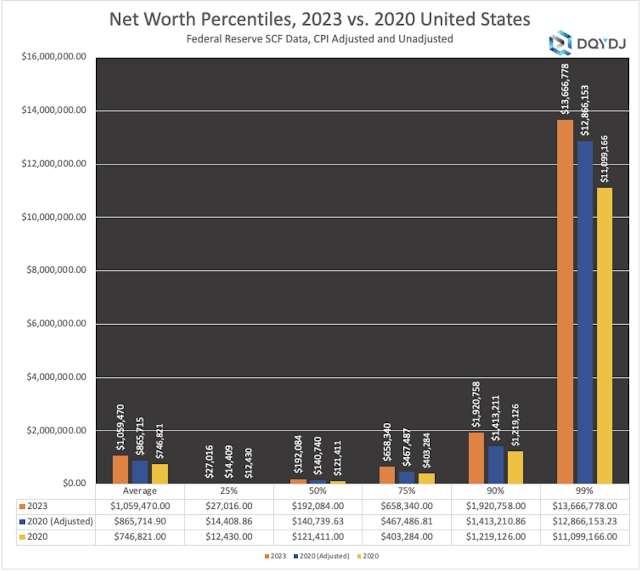Part 1: The Middle
Putting the Dimensions of Class TogetherAll of the elements that we have been exploring combine to form a rough picture of social class. There is not a universally accepted model for social class but income, wealth, education, location, prestige/power all can arguably play a part in determining class.
- What are the different classes in the US?
- Is there a middle class, and if so, what is it?
wealthincomeeducationlocationprestige
Sociologists have used different models of social class to explain how social class disaggregates in the United States. The table below is based on Hamilton College professor Dennis Gilbert's 1992 model of social class. Look at the table and notice how Gilbert uses multiple measures (job, income, education) to parse out the classes.

 Joan Williams' Model
Joan Williams' ModelThe "poor" class
- the bottom 30%
- making less than 40K
- median income of $22K
- the middle 55%
- approx. $41K - $131K
- median of $75K
- the top 14% on earners and at least one college degree in household
- earns more than $131K per year
- median of $173,000
- Here is a 2 minute explanation by the author on Youtube.
- Here is a 4 minute interview with the author on Fox News.
- And Williams started a project to address the education divide called Diploma Divide.
- (Extra) For more about her work, see these:
- Review from Harvard Magazine here.
- Review from Financial Times.
- Review from Medium here.
- Powerpoint slides here.
In her 2016 book, Strangers In Their Own Land; Anger and Mourning on the American Right, renown sociologist Arlie Russell Hochschild explains the deep story behind the Tea Party support and the rise of Trump which stems from growing social class inequality happening at the same time as civil rights equality which leaves many White Americans feeling like they are left behind by the government and that they are "strangers in their own land."
What I found most intriguing in her book was the concept of the "deep story", or a story that shapes the way people feel. It doesn't matter if the story is real or true or not. What matters is that the story is believed to be true so people shape their feelings and actions as if it were real. Dr. Hochschild's idea is explained on NPR's Hidden Brain,
In her new book, Strangers in Their Own Land, sociologist Arlie Hochschild tackles this paradox. She says that while people might vote against their economic needs, they're actually voting to serve their emotional needs. Hochschild says that both conservative and liberals have "deep stories" — about who they are, and what their values are. Deep stories don't need to be completely accurate, but they have to feel true. They're the stories we tell ourselves to capture our hopes, pride, disappointments, fears, and anxieties.
- Upper middle-class families encourage negotiation and discussion and the questioning of authority and it can give the children a sense of entitlement.
- Working-class and lower-income families encourage the following and trusting of people in authority positions, and these parents do not structure their children's daily activities, but rather let the children play on their own. This method teaches the children to respect people in authority, and allows the children to become independent at a younger age.
Lareau explains these differences in her research. Her book, Unequal Childhoods is explained in the Atlantic here. And there is an excerpt available here.
Lareau identifies these two styles:
Concerted Cultivation: The parenting style, favored by middle-class families, in which parents encourage negotiation and discussion and the questioning of authority, and enroll their children in extensive organized activity participation. This style helps children in middle-class careers, teaches them to question people in authority, develops a large vocabulary, and makes them comfortable in discussions with people of authority. However, it gives the children a sense of entitlement.
Accomplishment of Natural Growth: The parenting style, favored by working-class and lower-class families, in which parents issue directives to their children rather than negotiations, encourage the following and trusting of people in authority positions, and do not structure their children's daily activities, but rather let the children play on their own. This method has benefits that prepare the children for a job in "working" class jobs, teaches the children to respect and take the advice of people in authority, and allows the children to become independent at a younger age.Student discussion:
Why do you think each social class shapes kids these ways? Brainstorm your own hypothesis here.
Analyze either your family or a family you know - which style do you think they are and why? Can you give a specific example?

































